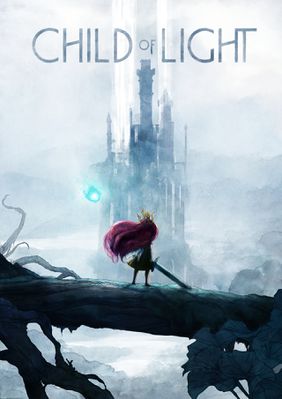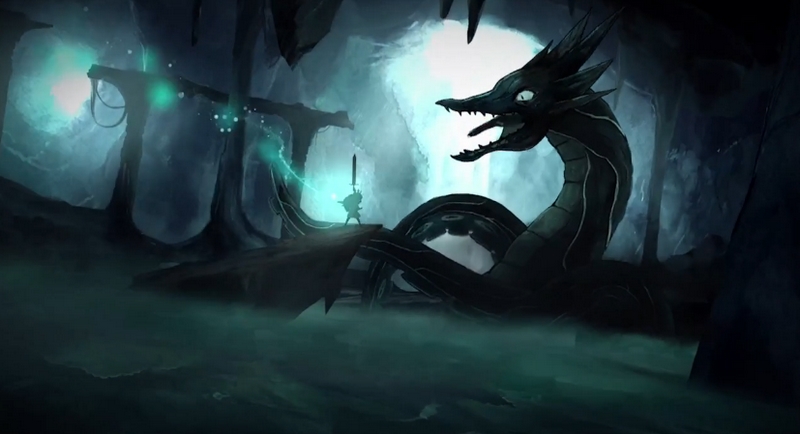I don’t know what to feel.
Since it was first revealed earlier this year, I had nothing but great expectations for this game. Storybook RPG built on the UbiArt engine? That’s a great premise on paper.
But by the end of my playthrough, I think all of my expectations were missed by this game. What should have been great is really only good, and sometimes, not even that. Disappointment is obvious, but the real issue is that this game really made me feel nothing at all.
Almost a year ago, when I first laid eyes on the title’s first screenshots that bloomed en masse from gaming news waterholes everywhere, it was hard not to feel something. Be it benign inspiration, nostalgia for games past, or curious wonder, the resplendence of this water color world captured much of the community at large. If there is anything that this game consistently delivers on, it’s dependably providing beautiful and vibrant environments and backdrops reminiscent of childhood fairy tales.
Even it’s strongest point – the art – has its weaknesses, though. Compared to the handdrawn backgrounds, the 3D-ish models are surprisingly bland. Aurora, our protagonist, is oddly animated and detailed. Her face is angular and basic, and her hair flows in a very PS2 Shinobiscarf sort of way. These are only standouts because of context, really, as almost everything else in the game is done in the prevalent two-dimensional paper animation sort of style. The choice to forego it for the main character and her party members poses a distracting “why?” instead of the gratifying pedestal that the change in art should put it on.
Transported from her life in 19th century Austria, Aurora is thrust into this new, dream-like Lemuria. She learns upon her arrival that this colorful world is being muted by the dark shadow of Queen Umbra’s dominion, and it doesn’t take long before she discovers that her return to her old world is closely related to the liberation of this new one. The story’s simplicity both reinforces the bedtime story motif, and leaves a little more to be desired. The twists and turns of the plot are rather rigid, and are never incredibly unpredictable.
Other aspects of the writing are a bit stronger. The entire text rhymes, from dialogues to narration, giving the game that “modern epic poem” feel. Well, at least it attempts to. Many of it is near rhyme, and some barely pass for that. The scheme would have greatly benefited from full voice over, allowing for inflection and dictation to nail some of the more improbable rhymes. Alas, more often than you’d expect, you’ll be left saying some of the phrases in your head, trying to link the rhymes in any way you can.
The characters you meet along the way are pretty well realized. Each one is rather simple, but they are each charming in their own ways. They are all very needy, requiring help from you in one way or another, and their interactions with each other as you gather them to your party becomes a point to look forward to. It doesn’t happen enough, unfortunately.
You explore this side-scrolling world first on foot, moving like any other platformer. Then eventually you gain wings and take to the skies, leaving every pastel corner open for exploration. Traversal is light and floaty, a fitting metaphor for the game’s casual and fleeting mechanical design. Exploration is only barely impeded by easy-to-rout obstacles, and can become a time consuming sub-adventure, as almost every turn off the beaten path houses some, albeit unnecessary, rewards.
The meat and potatoes of the game revolves around its turn based combat. Two of your party members fight up to three enemies at a time. The encounters themselves aren’t random, as you will meet your foes on the main map, and will have ample opportunity to avoid or surprise them. When engaged, JRPG scholars will notice the extreme similarity of the turn bar floating below the action to that of Grandia 2. It works in similar ways as well; portraits of characters and enemies move from left to right, and the portrait that hits the right side first goes. When their turn is over, they return to the left and the race begins again. This was the strongest part of the PS2 classic, and is the strongest part of Child of Light.
The ways to manipulate the progress on the bar are many, such as spells and skills that speed you up, slow them down, or stop them entirely. When characters slide over the tail end of the bar, they enter the red “casting” zone, where if they are attacked in, will be interrupted and shunted back down the ladder. The overall give and take between the enemies has plenty of potential… on hard mode. All of this nuance is fine and good if you’re forced to use it, but on default difficulty you will never have to do more than simply swing at whatever is in front of you. You will miss out on the strongest element of the game if you opt for the casual experience, which will be fine for most people. After three hours, I ramped it up.
It was important for me to do this, because all of the remaining RPG elements depend on combat being a challenge. Which characters have higher stats in particular parameters than others doesn’t matter if its never a challenge. Occuli – gemstones that grant elemental attacks/resistances and other battle buffs – are rendered useless. The branching skill progression tree, though fundamentally haphazard and messy, serves no purpose if you only need one skill. In short, Child of Light is only half of its mission statement if you don’t turn the difficulty up.
But even still, the game feels like it’s missing something. Charm and nostalgia only take me so far. You’ll spend more time floating through empty space, listening to the whimsical soundtrack’s attempt to pull at your heart strings than actually doing something compelling. As I am not much for casual game experiences, this particular title’s more hardcore elements are plain and unsophisticated as well.
Closing Comments:
The sum of Child of Light’s parts is an unfinished whole, a decent enough starting point that succeeds more than it fails, but never in a super memorable way. I’m engaged well enough while I actually play through the 11+ hour campaign, but when I turned it off, I admit I searched for reasons to turn it back on.








